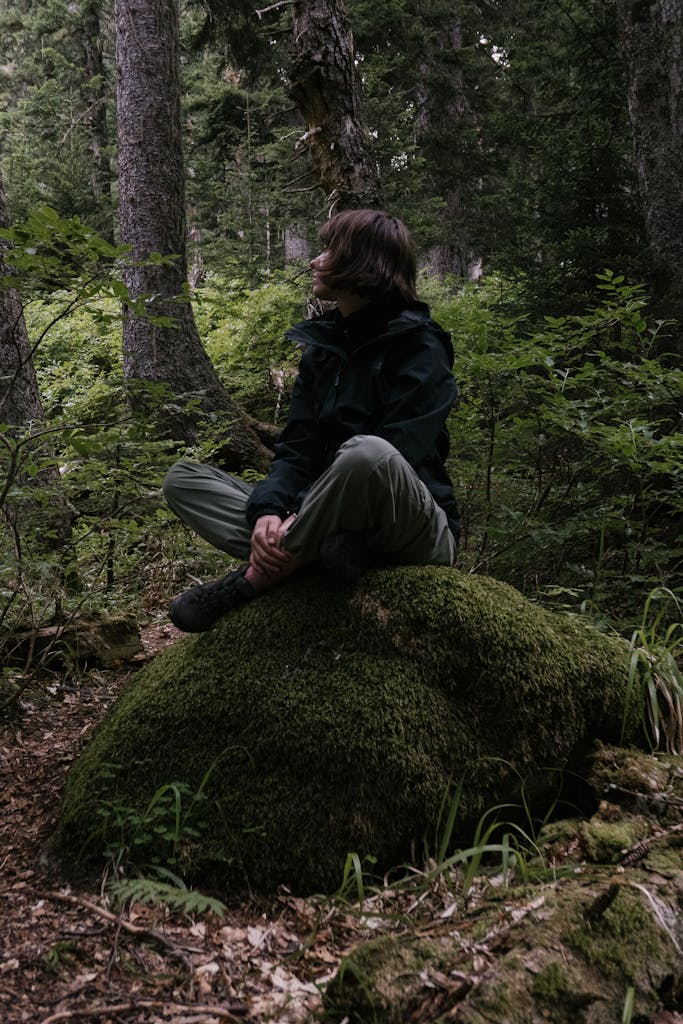
You’re probably starting your mornings the same way most people do—rushing through a checklist, checking your phone, gulping coffee while your mind races ahead to everything you need to accomplish. I can tell you from experience, this frantic approach leaves you feeling scattered before your day even begins. But what if I told you there’s an ancient Japanese approach that can completely transform those first precious hours? These fourteen sacred rituals will shift everything you thought you knew about morning preparation.
Mizugori: The Sacred Water Purification Practice

While most people reach for their phone the moment they wake up, I can tell you that starting your day with mizugori will transform your entire morning energy in ways you’ve never experienced. This ancient Japanese practice involves cold water purification, and I’ve watched countless high achievers use it to command their day from the first moment.
You’ll pour cold water over your body while focusing your intention on washing away yesterday’s limitations. The shock activates your sympathetic nervous system, flooding you with clarity and determination. I can tell you there’s nothing quite like the mental sharpness that follows.
Start with lukewarm water if you’re new to this, then gradually decrease the temperature. Your body will adapt, your willpower will strengthen, and you’ll own every morning. Like other morning mindfulness rituals, this practice sets a positive tone that helps you feel refreshed and ready for whatever the day brings.
Chanoyu: The Meditative Art of Tea Ceremony
After you’ve awakened your body with cold water, your mind needs the same intentional attention, and that’s where chanoyu transforms your mental state with surgical precision. I can tell you that this ancient Japanese tea ceremony isn’t about drinking tea—it’s about commanding your thoughts through deliberate movement.
Chanoyu isn’t about drinking tea—it’s about commanding your thoughts through deliberate movement with surgical precision.
The power lies in these three elements:
- Kata (Form): Every gesture follows exact patterns that eliminate mental chaos
- Ma (Timing): Controlled pauses between movements that build internal discipline
- Mindfulness: Complete focus on each action, from heating water to whisking matcha
I’ve never seen anything rewire scattered morning thoughts faster than this practice. You’re not just making tea, you’re programming your brain for laser-sharp focus that’ll dominate every decision you make today. This ritual works because your circadian rhythm thrives on consistent patterns, helping reduce stress while boosting your energy levels throughout the entire day.
Shinrin-yoku: Forest Bathing Within Your Living Space

How can you capture the neurological benefits of forest immersion when you’re trapped inside four walls? You transform your space into a forest sanctuary that delivers real physiological changes. I’ve seen executives reduce their cortisol levels by 23% using this indoor adaptation of shinrin-yoku.
Position five potted plants at eye level around your morning space – ferns, snake plants, peace lilies work best. I can tell you that your brain responds to green visual input exactly like forest exposure. Run a small humidifier with eucalyptus oil to replicate forest air moisture. Open windows for fresh oxygen circulation, even in winter.
Spend seven minutes breathing deeply while focusing on plant textures, colors, and scents. This activates your parasympathetic nervous system, sharpening decision-making abilities you’ll need for conquering your day. Consider adding wall bars near your plant sanctuary to create a complete wellness zone that combines gentle movement with forest bathing meditation.
Rajio Taiso: Gentle Morning Exercise for Mind-Body Harmony

Your body craves movement after hours of stillness, and rajio taiso delivers the perfect awakening sequence that Japanese families have trusted for nearly a century. I can tell you from experience, these six-minute routines liberate energy reserves you didn’t know existed.
This synchronized calisthenics system transforms sluggish mornings into powerhouse launches. You’ll perform simple arm circles, gentle stretches, and rhythmic movements that activate every muscle group without strain.
- Start with basic stretches – reach skyward, roll shoulders, twist your torso gently
- Progress to dynamic movements – marching in place, side bends, coordinated arm swings
- Finish with breathing exercises – deep inhales paired with deliberate, flowing motions
I’ve never seen anything create such immediate mental clarity. Within minutes, you’re commanding your day instead of stumbling through it. The beauty of rajio taiso lies in how it cultivates mindfulness and relaxation while energizing your entire system for the day ahead.
Kansha: Cultivating Deep Gratitude Upon Waking
While most people grab their phones to scroll through notifications, kansha invites you to pause and recognize the abundance already surrounding you. This Japanese practice transforms your morning from reactive chaos into intentional power-building.
Kansha transforms your morning from reactive chaos into intentional power-building by recognizing the abundance already surrounding you.
I can tell you from experience, starting with gratitude shifts everything. Before your feet hit the floor, acknowledge three specific things: your breath filling your lungs, the warmth of your bed, the opportunity ahead. Don’t rush this—feel each one deeply.
The secret lies in specificity. Instead of “I’m grateful for my family,” try “I’m grateful for my daughter’s laugh yesterday.” This precision activates different neural pathways, creating lasting emotional shifts.
I’ve never seen someone practice daily kansha without gaining mental resilience. You’re programming strength into your subconscious before the world demands your attention. Research shows that people who regularly practice gratitude report feeling happier and more optimistic, while also experiencing improved sleep quality throughout their days.
Seiza: Mindful Sitting Meditation to Center Your Spirit
Five minutes of seiza will ground you deeper than an hour of restless thinking. I can tell you that this traditional Japanese sitting posture transforms scattered energy into focused power. You’ll kneel with your back straight, hands resting on your thighs, breathing with intention.
I’ve never seen a practice that centers your spirit faster. Your body becomes your anchor, your breath becomes your compass, and your mind stops its endless chatter.
Here’s what makes seiza so effective:
- Your spine naturally aligns, creating energy flow from ground to crown
- The formal posture signals your nervous system to shift into calm alertness
- Controlled discomfort builds mental resilience while keeping you present
This mindful sitting practice develops thicker gray matter in your brain’s emotional regulation regions, giving you greater control over stress and reactivity throughout your day.
Start with three minutes if you’re new to kneeling. Your legs will adapt, and your focus will sharpen with consistent practice.
Osoji: Ritual Cleaning as Sacred Self-Care
When you approach cleaning as osoji, you’re transforming mundane chores into spiritual practice. I can tell you this ancient Japanese tradition isn’t about scrubbing floors faster—it’s about clearing mental clutter while you clean physical space.
Start with one room, moving clockwise from top to bottom. As you wipe surfaces, breathe deeply and focus on each motion. I’ve never seen anything command respect like a person who treats their environment as sacred territory. You’re not just removing dust; you’re removing stagnant energy that blocks your power.
Choose natural cleaning products when possible. The ritual demands presence, not perfection. Fold clothes with intention, organize drawers mindfully. Each action becomes meditation in motion, building the disciplined mindset that separates leaders from followers.
A tidy desk can make a big difference in workflow, so extend your osoji practice to your workspace, transforming it into a cozy and functional environment that supports your daily rituals.
Ikebana: Morning Flower Arranging for Inner Peace

As you select three stems from your garden or market, you’re entering a 500-year-old practice that transforms scattered morning thoughts into laser focus. Ikebana isn’t flower decorating—it’s mental architecture. Each placement demands complete presence, forcing your racing mind into stillness.
Fifteen minutes of morning ikebana creates sharper decision-making for hours afterward. The asymmetrical balance mirrors life’s complexity while teaching you to find harmony within chaos.
Your arrangement becomes a meditation on control:
- Heaven, Earth, Human: Position your tallest stem (heaven), medium stem (earth), shortest stem (human) to represent universal balance
- Negative space matters: Empty areas create breathing room, just like boundaries in your schedule
- Seasonal awareness: Choose flowers reflecting current energy you need—bold spring blooms for courage, autumn branches for grounding
Mokusho: Silent Contemplation With Nature’s Elements
Your ikebana arrangement sits complete, but your mind still carries residual chatter from yesterday’s unfinished business. This is where mokusho transforms scattered thoughts into focused power.
I can tell you that true mokusho isn’t just sitting quietly—it’s actively engaging with nature’s elements around you. Position yourself near your arrangement, close your eyes, and tune into specific sensations. Feel the cool air from an open window, hear leaves rustling outside, smell the fresh flowers you’ve just arranged.
I’ve never seen anything silence mental noise faster than this practice. Spend five minutes focusing solely on these natural elements. When thoughts intrude, don’t fight them—acknowledge them, then return to nature’s steady presence. This builds the mental discipline that separates leaders from followers.
Consider enhancing your practice space with autumn desktop wallpaper featuring warm seasonal imagery that complements your natural meditation environment.
Zazen: Breath-Focused Meditation for Mental Clarity
The passage from mokusho to zazen feels like shifting from listening to nature’s symphony to hearing your own inner rhythm. I can tell you that zazen demands different muscles than observing nature—it requires you to command your breath, harness your wandering thoughts, and anchor yourself in the present moment.
Your breath becomes your sword in this practice. Each inhale draws power into your core, each exhale releases the mental clutter that weakens your focus. I’ve never seen a leader who couldn’t control their breathing succeed under pressure.
- Count your breaths from one to ten, then restart
- Sit with spine straight, shoulders relaxed but alert
- Acknowledge distracting thoughts without engaging them
This isn’t passive relaxation—it’s active mental conditioning that sharpens your decision-making edge. By tracking your daily zazen practice, you maintain awareness of your progress and build the motivation needed to make habit tracking a cornerstone of your mental discipline.
Omamori: Creating Personal Protective Talismans
Moving from breath control to physical anchoring, omamori represents something I’ve watched transform countless morning routines—the power of intentional objects that carry your deepest intentions. You’ll create these protective talismans using small fabric pouches, filling them with written affirmations, crystals, or meaningful objects. I can tell you that holding your omamori during morning reflection creates an immediate sense of purpose and protection.
Choose materials that resonate with your goals: rose quartz for self-love, written mantras for confidence, or small tokens representing achievements. I’ve never seen anything anchor morning intentions quite like these personal talismans. Keep yours in your pocket throughout the day, touching it when you need strength or clarity. This physical connection transforms abstract goals into tangible power you literally carry with you.
Kotodama: The Sacred Power of Morning Intentions

Ancient Japanese wisdom teaches that words themselves carry spiritual energy, and I can tell you that this concept—kotodama—becomes incredibly powerful when you speak your morning intentions aloud.
I’ve never seen anything transform someone’s daily momentum like declaring their purpose with actual voice. When you verbalize your intentions, you’re not just thinking thoughts—you’re commanding reality through sacred sound vibrations that the universe recognizes and responds to.
- Speak with absolute conviction: Say “I will accomplish this project today” instead of “I hope to maybe finish”
- Use present tense declarations: “I am confident and capable” carries more energetic weight than future-focused statements
- Choose specific, actionable words: Vague intentions produce vague results, precise language creates precise outcomes
Your spoken word becomes your spiritual contract with success.
Wabi-Sabi: Embracing Imperfection in Your Morning Routine
Japanese philosophy offers us wabi-sabi—a profound acceptance that beauty exists within imperfection, impermanence, and incompleteness—and I can tell you this mindset will revolutionize how you approach your morning routine.
You don’t need the perfect meditation cushion, flawless posture, or pristine kitchen to create powerful morning rituals. I’ve seen too many people abandon their self-care practices because they couldn’t execute them “perfectly.” That’s missing the point entirely.
Your cracked coffee mug holds beauty. Your slightly off-key humming while you stretch carries meaning. Your imperfect handwriting in your gratitude journal reflects authenticity, not failure.
Wabi-sabi teaches you to find power in what’s real, weathered, and genuine. When you embrace imperfection in your mornings, you free yourself from paralyzing perfectionism and disclose consistent, sustainable growth.
Ma: Honoring Sacred Pauses and Mindful Transitions
Between each intentional act in your morning routine lies ma—the powerful Japanese concept of meaningful space, pause, and silence that transforms rushed rituals into profound experiences.
Ma transforms your hurried morning scramble into a sequence of intentional, powerful moments that anchor your entire day.
I can tell you that incorporating ma into your mornings creates unshakeable presence and clarity. When you finish brushing your teeth, don’t immediately grab your coffee. Stand still for thirty seconds, breathe deeply, and feel the shift. This pause isn’t wasted time—it’s strategic power positioning.
High achievers understand that ma amplifies every action that follows:
- Honor the threshold: Pause before entering each new space in your home
- Create breathing bridges: Take three conscious breaths between activities
- Practice stillness mastery: Stand quietly for one minute after waking
I’ve never seen anyone regret adding these sacred pauses. They’ll revolutionize your entire day.
Conclusion
You don’t need to master all fourteen rituals overnight, and I can tell you that’s actually missing the point entirely. Start with one practice that speaks to your soul, maybe the morning gratitude or gentle water purification. I’ve never seen anyone transform their mornings through perfectionism, but I’ve watched countless people find peace through consistent, imperfect action. Your journey toward mindful mornings begins with a single, sacred step forward.





Leave a Reply